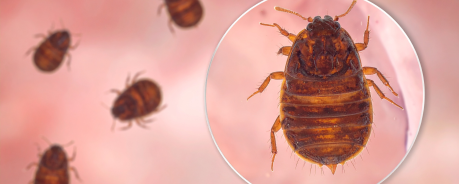Pubic lice

Although the small bloodsuckers are only two millimeters in size, they can be quite annoying.
Crabs are small insects nesting and multiplying mainly in the pubic hair. They can sometimes be found in other hairy areas of the body, for example in the armpits, on the thighs and in a beard, very rarely in the eyebrows. A pubic lice infestation makes itself initially felt through itching.
The bite of the parasite can cause bluish stains. Brownish stains are often found in underwear, caused by the excrements of the lice. Crabs are easily visible to the naked eye. Under a magnifier you can also see their whitish eggs, the so-called nits, which they usually attach to the pubic hair.
Transmission
Crabs are transmitted through close physical contact, usually during sex. Occasionally, crabs are also spread through shared combs, towels, or bed linen.
Protection
The best prevention is a complete intimate shave. For those who do not consider this an option there is also a treatment if needs be. Anyone who has pubic lice should refrain from sex or any close physical contact to avoid passing them on.
How to get rid of crabs
You can treat crabs yourself. Get a suitable lice shampoo from the pharmacy. This then is mainly applied to the pubic hair, but also to the belly, the butt, and thighs, depending on the infestation and how much hair you have. To get rid of the lice eggs, shaving is helpful, but you can do without. After eight to ten days you have to repeat the shampoo treatment, because by then a new generation of crabs will have grown from the eggs that were not removed.
Inform all people with whom you had close physical contact in the last three weeks, including all of your sex partners, so they, too, can be treated.
Towels, washcloths, underwear, pyjamas, and bed linen must be changed daily during the treatment and must be washed at a minimum temperature of 60° C. Otherwise you will be infected again.
Share on
